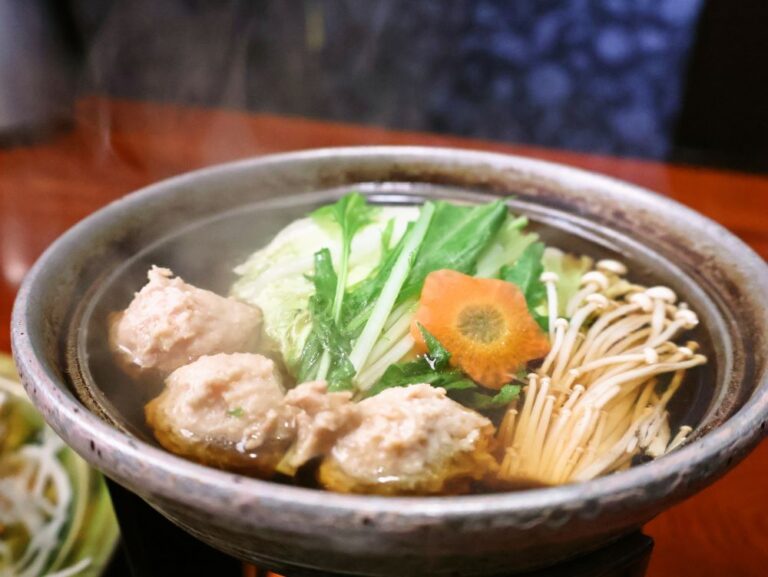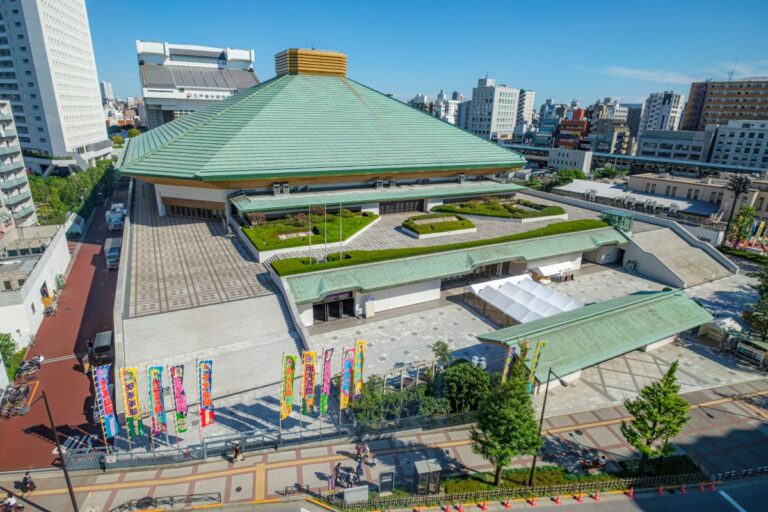If you’re visiting Tokyo, Japan, and looking for a unique cultural experience, watching a sumo wrestling match is a great option. Sumo wrestling is Japan’s national sport, and it has a long and fascinating history dating back to ancient times. The sport is steeped in tradition, and watching a match is an exciting way to immerse yourself in Japanese culture.

Note: See our in Depth guide for watching the upcoming 2023 September Grand Tournament which kicks off on September 10th. There’s still time to get tickets!
Knowing how to Attend a sumo match can be a bit challenging if it’s your first time, but with a little preparation, you can fully enjoy the experience. Here are some key takeaways to keep in mind when watching sumo in Tokyo:
Key Takeaways
- Sumo wrestling is Japan’s national sport, and it has a long and fascinating history dating back to ancient times.
- The Sumo Arena in Tokyo is called Ryogoku Kokugikan
- Grand Tournaments are held 6 times a year, 3 of which are in Tokyo
- Tickets can be purchased in advance or on the day of the match (but there is a catch)
- The competition begins early in the morning with the amateurs, and the professional wrestlers take the ring later in the day.
- Before the match begins, the wrestlers perform a ritual called shiko, which involves stomping their feet and lifting their legs high in the air.
Understanding Sumo Wrestling in Tokyo

If you’re planning to watch sumo wrestling in Tokyo, it’s important to have a basic understanding of the sport. Sumo is a traditional Japanese wrestling sport that dates back over 1,500 years. It involves two wrestlers, or rikishi, facing off in a circular ring called a dohyo. The objective is to force your opponent out of the ring or to make them touch the ground with any part of their body other than the soles of their feet.
Sumo has a rich history and cultural significance in Japan. It is considered a national sport and is deeply ingrained in Japanese tradition and folklore. Each wrestler belongs to a stable, or heya, where they live and train together under the guidance of a stablemaster, or oyakata. Wrestlers also follow strict rules and traditions, such as wearing a mawashi, a type of loincloth, and performing a pre-bout ritual called shiko, which involves stomping their feet and lifting their legs high.
Sumo tournaments, or basho, are held three times a year in Tokyo at the Ryōguku Kokugikan, the national sumo stadium. Each tournament lasts for 15 days, with wrestlers competing in a round-robin format to determine the champion. The tournaments are highly competitive and draw large crowds of all.
When watching sumo in Tokyo, it’s important to be respectful of the sport and its traditions. Cheer for your favorite wrestler, but avoid shouting or making disruptive noises during the match. Also, be sure to follow the rules and guidelines set by the stadium staff, such as not bringing in outside food or drinks and refraining from taking photos or videos during the match.
When and Where to Watch Sumo in Tokyo
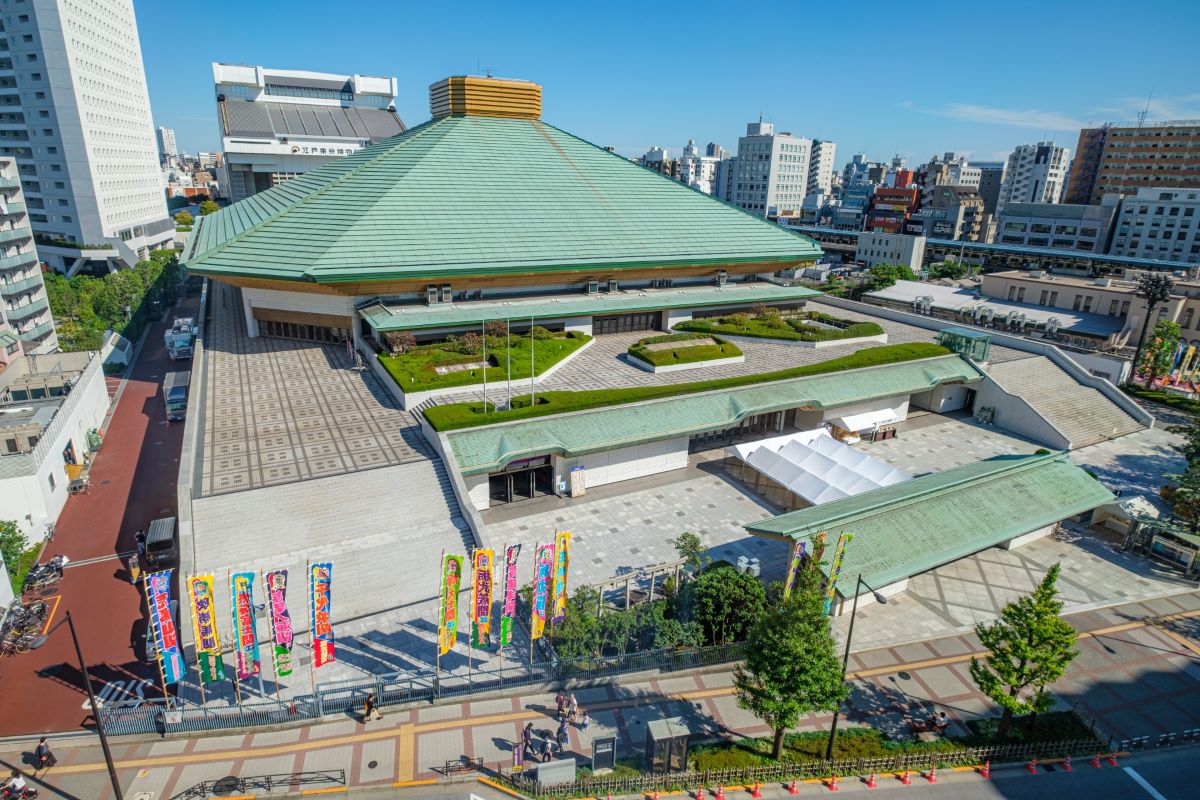
If you’re visiting Tokyo and want to experience one of Japan’s most iconic sports, watching sumo wrestling is a must. Here’s what you need to know about when and where to watch sumo in Tokyo.
Tokyo Sumo Tournament Schedule
The official sumo tournaments, called “basho,” are held three times a year in Tokyo at the Ryogoku Kokugikan, the national sumo stadium. The tournaments take place in January, May, and September and each tournament lasts for 15 days. That means there are a total of 45 days of top-class sumo in Tokyo each year.
The tournament starts early in the morning around 8:30 am and lasts until the evening, with the highest-ranked wrestlers competing later in the day. If you want to catch the most exciting matches, it’s best to arrive in the afternoon.
Buying Tickets for Sumo Tournaments in Tokyo

Tickets for the sumo tournaments in Tokyo can be purchased in advance or on the day of the event. However, Note that tickets often sell out quickly, especially for the most popular days and seats.
You can purchase tickets online through the official Japan Sumo Association website or through third-party vendors. If you’re looking for a more affordable option, you can also try buying same-day tickets at the stadium box office. However, be prepared to wait in line early in the morning as tickets are distributed on a first-come, first-served basis.
It’s also worth noting that there are different seating options available, with prices ranging from around 3,800 yen for general admission seats to over 35,000 yen for ringside seats.
Overall, watching sumo in Tokyo is an unforgettable experience that offers a unique glimpse into Japanese culture and tradition. With a bit of planning and preparation, you can witness some of the world’s best sumo wrestlers compete in one of the most historic and iconic venues in the sport.
Watch Sumo Morning Training in Tokyo

If you want to witness the intense training sessions of sumo wrestlers, you can attend the morning practice sessions at sumo stables in Tokyo. These sessions are called keiko, and they usually start early in the morning, around 7:30 am, and last for a few hours.
The most popular area to watch sumo training is Ryogoku, where many sumo stables are located. Some of the most popular sumo stables to watch sumo training in Tokyo are Arashio Stable, Kokonoe Stable, and Tomozuna Stable. However, keep in mind that not all stables allow visitors, and some require reservations in advance.
The easiest way to book a sumo morning training session is through a local tour operator like Viator or Get Your Guide. These tours usually include a guide who will take you to a sumo stable, provide an overview of the rules and history of sumo, and translate the wrestlers’ conversations. They also offer hotel pick-up and drop-off services, making the experience more convenient.
Alternatively, you can book a sumo morning training session directly with the sumo stables. However, keep in mind that the process can be complicated, as some stables only accept reservations through phone calls, emails, or fax. Also, some stables may require you to speak Japanese or have a Japanese speaker make the reservation for you.
Note that sumo morning training sessions can be a bit intense, with wrestlers sweating and grunting as they practice their moves. Therefore, it’s essential to follow the rules and etiquette of the sumo stable, such as removing your shoes before entering, sitting quietly and respectfully, and not taking pictures or videos without permission.
More: How To Watch Sumo Training Practice In Tokyo
What to Expect at a Sumo Tournament in Tokyo
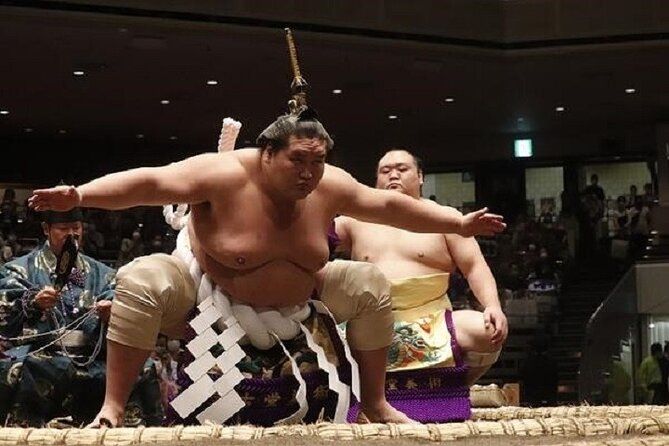
If you’re planning to attend a sumo tournament in Tokyo, there are a few things you should know to make the most of your experience. Here’s what you can expect:
Seating and Viewing Options
Sumo tournaments are held in a stadium called the Ryogoku Kokugikan, which has a capacity of around 11,000 people. There are seating options available, including:
- Box seats: These are the most expensive seats, close to the ring.
- Chair seats: These are regular seats with chairs.
- Standing room: These are the cheapest tickets, and you’ll have to stand the whole time.
Regardless of where you sit, you’ll have a good view of the action. There are also large screens that show replays and close-ups of the wrestlers.
Food and Drink
There are food and drink options available at the tournament, including:
- Bento boxes: These are pre-made meals that you can purchase before the tournament starts.
- Concession stands: These sell snacks like popcorn, candy, and ice cream.
- Beer and soft drinks: These are available at locations throughout the stadium.
Souvenir Shopping
If you want to take home a souvenir from the tournament, there are options available. You can purchase:
| Item | Price Range |
|---|---|
| T-shirts | ¥2,000-¥3,000 |
| Posters | ¥1,000-¥2,000 |
| Keychains | ¥500-¥1,000 |
You can find souvenir stands throughout the stadium, and they usually accept cash or credit cards.
Etiquette and Rules for Watching Sumo in Tokyo
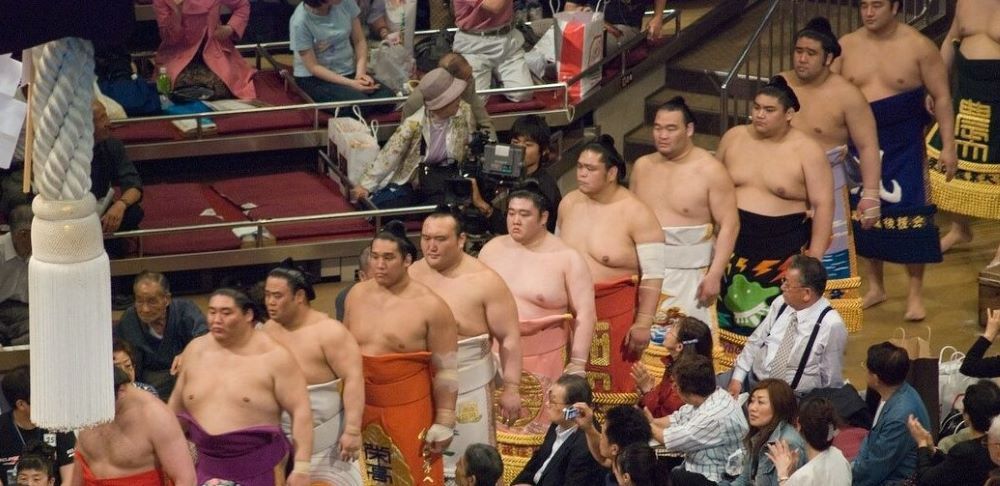
Behavior and Attire
When watching sumo in Tokyo, it’s important to follow proper etiquette to show respect for the sport and the wrestlers. Here are a few guidelines to keep in mind:
- Turn off your phone or put it on silent mode.
- Avoid talking during the matches.
- Avoid standing up or leaving your seat during a match.
- Do not throw anything onto the dohyo (sumo ring).
- Remove your shoes before entering the arena.
- Save your cheers for the bouts conclusion
As for attire, there are no strict dress codes, but it’s best to dress modestly and comfortably. Avoid wearing revealing clothing or anything that might be considered disrespectful.
Understanding the Rules of Sumo
To fully appreciate the matches, it’s helpful to have a basic understanding of the rules of sumo. Here are a few key points:
| Objective | Force your opponent out of the ring or make them touch the ground with any body part other than their feet. |
|---|---|
| Match Length | A match can last anywhere from a few seconds to a few minutes. |
| Starting Position | Wrestlers start the match crouched down with their hands on the ground. |
| Winning Techniques | There are many different techniques wrestlers can use to win, such as pushing, pulling, tripping, and throwing. |
| Weight Classes | There are no weight classes in sumo, so wrestlers of all sizes can compete against each other. |
By following these guidelines and understanding the rules of sumo, you’ll be able to fully immerse yourself in the experience of watching sumo in Tokyo.
Getting to the Sumo Arena in Tokyo
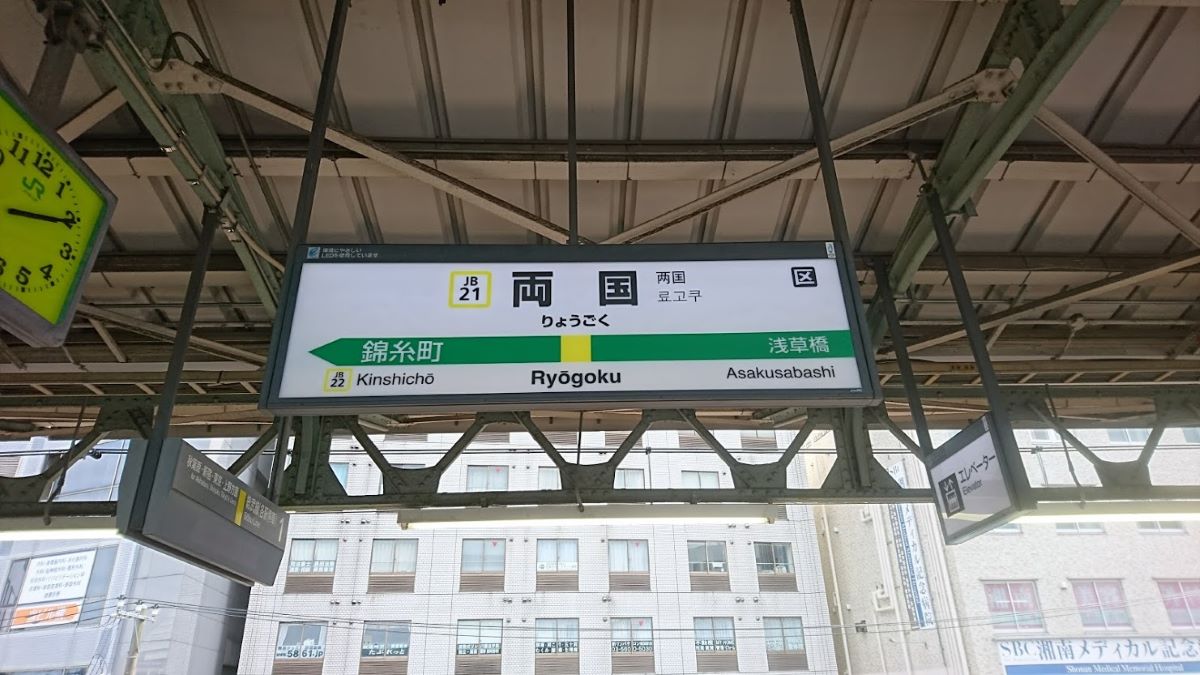
Public Transportation Options
When it comes to getting to the sumo arena in Tokyo, public transportation is the way to go. The easiest option is to take the JR Sobu Line to Ryogoku Station, which is just a two-minute walk from the Ryogoku Kokugikan stadium. Other options include taking the Toei Oedo Line to Ryogoku Station or the Tokyo Metro Hanzomon Line to Oshiage Station and transferring to the Toei Asakusa Line to get to Ryogoku Station.
If you’re coming from Tokyo Station, taking the Sobu Line is the most convenient option. From Shinjuku Station, you can take the JR Chuo Line to Ochanomizu Station and transfer to the Sobu Line to get to Ryogoku Station.
Another option is Tokyo’s fantastic water busses which are especially convenient (and fun) if you are coming from Odaiba or Asakusa
Driving and Parking
If you’re planning on driving to the sumo arena, be aware that parking can be difficult to find and expensive. There are a few parking lots near the arena, but they fill up quickly on tournament days. It’s recommended to take public transportation instead.
Bicycle Rental
If you’re feeling adventurous, you can rent a bicycle to get to the sumo arena. There are rental shops in the area, and biking is a great way to explore the neighborhood before or after the tournament. However, keep in mind that biking in Tokyo can be challenging, especially during rush hour. Overall, taking public transportation is the most convenient and cost-effective way to get to the sumo arena in Tokyo. With options available, you can easily find the best route for your needs and enjoy the excitement of a sumo tournament without the hassle of driving or parking.


